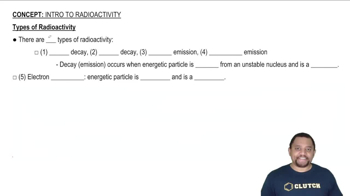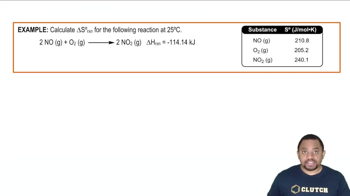Here are the essential concepts you must grasp in order to answer the question correctly.
Radioactivity and Disintegrations
Radioactivity refers to the process by which unstable atomic nuclei lose energy by emitting radiation. The activity of a radioactive substance is measured in curies (Ci) or picocuries (pCi), where 1 Ci equals 3.7 x 10^10 disintegrations per second. To find the number of disintegrations per second from a given activity level, one can convert pCi to disintegrations per second using this conversion factor.
Recommended video:
Energy Deposition and Radiation Units
When radioactive decay occurs, energy is released in the form of radiation, which can be quantified in joules. The energy deposited by radiation in biological tissues is measured in rads, where 1 rad equals the absorption of 0.01 joules of energy per kilogram of tissue. The rem is a unit that accounts for the biological effect of radiation, factoring in the type of radiation and its impact on human health.
Recommended video:
Units of Radiation Measurement
Calculating Radiation Exposure Over Time
To calculate the total radiation exposure over a period, such as one year, one must consider the continuous activity of the radioactive source and the energy deposited per disintegration. By determining the total number of disintegrations in a year and converting that to energy absorbed by the body, one can then express the result in rads and rems, providing a comprehensive understanding of the potential health risks associated with the exposure.
Recommended video:
Entropy of Reaction Example

 Verified step by step guidance
Verified step by step guidance

